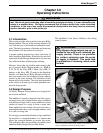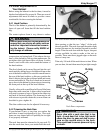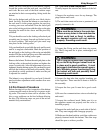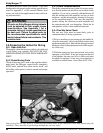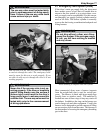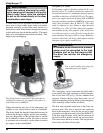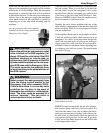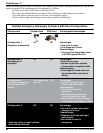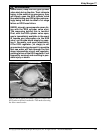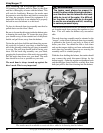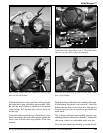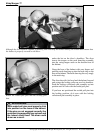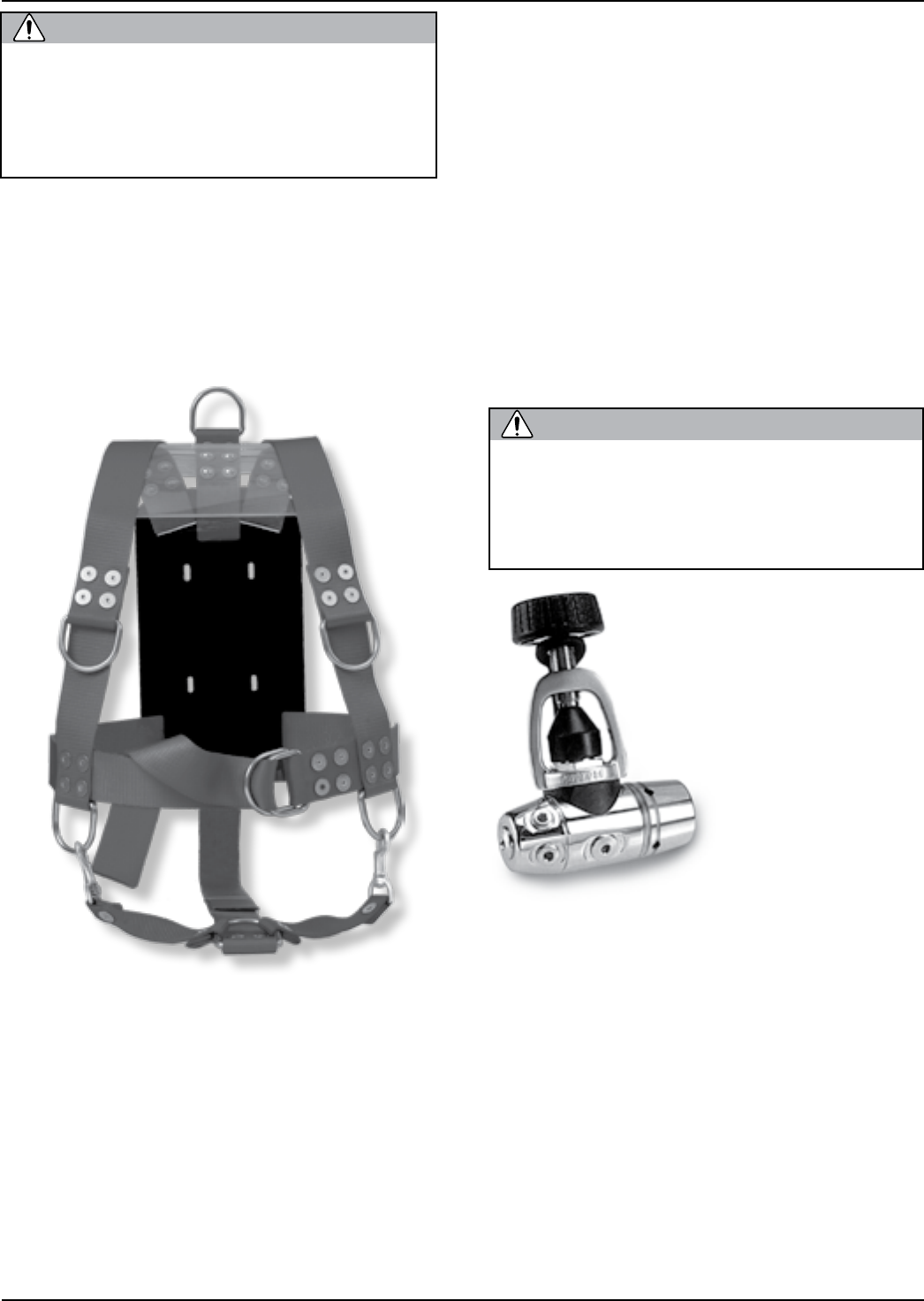
48
© Copyright 1970-2008 Kirby Morgan Dive Systems, Inc. All rights reserved. Document #080626002
Kirby Morgan 77
When determining the size of the emergency gas
cylinder to use, several factors must be considered.
The divers depth, the length of time the diver may be
without the main gas supply, and the gas consump-
tion rate. Regardless of the cylinder used, it should
be of sufficient volume to allow the diver to ascend
at a normal rate or transit to a point where a normal
gas supply can be reestablished.
The diving harness must have a provision for at-
taching the emergency gas supply and a place to
attach the diver’s umbilical.
Never dive without attaching the umbili-
cal to some type of harness or clip on the
diver’s body. Never allow the umbilical
to pull on the helmet directly or the diver
could suffer a neck injury.
WARNING
A small tank can be mounted horizontally on the
lower rear or front, while larger tanks are usually
mounted vertically in the center back similar to a
Scuba diver’s tank. Some harness designs incorporate
a cloth enclosure into which the tank fits. The entire
tank, valve, and regulator are enclosed in fabric. This
helps to prevent snagging.
European C.E. ONLY
In European countries that have adopted C.E. certi-
fication, only C.E. certified cylinders are allowed to
be used and must have a minimum charged capacity
available to the diver of 1400 N/l (50 scf). The emer-
gency gas supply must only be fitted with a KMDSI
first stage regulator and have a KMDSI over pressure
relief valve installed (Part # 200-017). The relief
must be adjusted to start lifting at approximately
180-200 p.s.i.g. (12.4-13.8 bar) above the regulator
intermediate setting. The purpose of the relief valve
is to allow pressure to vent off in the event the first
stage regulator develops a leak or creeps. Without a
pressure relief valve, the hose could rupture and the
emergency gas supply would be lost.
The emergency air/gas tank must be fitted with a
good quality first stage regulator to reduce the pres-
sure to less than 225 p.s.i.g. (16 bar) ambient diver
pressure. Connect the first stage hose with a set of
quick disconnecting locking sleeves to the emergency
valve assembly located on the side block.
The first stage regulator must have at least two low
pressure ports. One port is used for the connector
hose to the emergency valve and the second is used
to install an overpressure relief valve (Part #200-017).
If the first stage develops a leak, the full pressure of
the tank could be placed on the low pressure hose.
This could cause the hose to burst. The overpressure
relief valve will bleed off any leak.
A standard Scuba submersible pressure
gauge must be connected to the high
pressure port on the first stage so that
the diver can monitor his emergency
supply.
WARNING
Use a good quality first stage for
your emergency gas supply.



